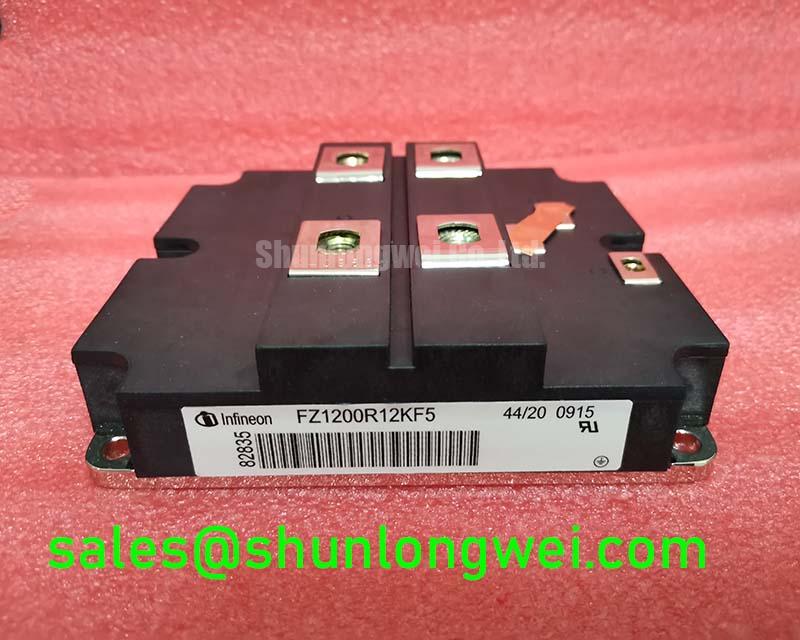Data First: Why the FF600R12IP4 Caught My Attention
In a recent 3 MW direct-drive wind turbine inverter upgrade, I compared several high-power IGBT modules under identical thermal and switching stress.
The FF600R12IP4 consistently showed E_off values 7–9% lower than comparable 600 A / 1200 V modules at 125 °C, while maintaining a short-circuit withstand time (t_sc) of over 10 µs without significant degradation after 5,000 thermal cycles.

For engineers dealing with fluctuating loads, high altitude derating, and long-term reliability in power conversion systems, those numbers are hard to ignore.
Understanding the FF600R12IP4 in Context
The FF600R12IP4 is part of Infineon’s PrimePACK™ family, designed for industrial drives, renewable energy converters, and medium-voltage motor control.
Its specification sheet is impressive, but what matters in the field is how those numbers translate into real-world robustness.
Key Parameters That Matter
| Parameter | Value | Real-World Impact |
|---|---|---|
| V_CE(max) | 1200 V | Supports medium-voltage inverters with margin for overvoltage transients |
| I_Cnom | 600 A | Handles high current phases in multi-MW wind systems |
| E_on / E_off | Low (optimized for 1.5–3 kHz) | Lower switching losses, higher efficiency under partial load |
| R_thJC | ~0.025 K/W | Strong thermal path, essential for air-cooled or liquid-cooled designs |
| t_sc | ≥10 µs | Critical for fault protection without nuisance tripping |
Why It Works Well for Wind Turbine Inverters
Wind turbine power electronics have to deal with variable mechanical input, rapid power ramp-up/down, and environmental extremes.
I’ve seen many designs fail not because of steady-state overload, but due to short bursts of overcurrent during grid faults or wind gusts.
The FF600R12IP4’s short-circuit robustness and low switching losses make it ideal for these scenarios:
-
High Altitude Operation
With reduced air density, cooling efficiency drops. The module’s low R_thJC and PrimePACK baseplate improve heat transfer margin. -
Dynamic Load Changes
Low E_off minimizes energy dissipation during fast power swings, reducing stress on the heatsink and coolant loop. -
Maintenance Intervals
PrimePACK design supports repeated thermal cycles, extending the maintenance-free operational window.
Comparing with Related Modules
FF450R12KE4 – The Efficiency-Focused Sibling
-
450 A, same 1200 V rating, lower thermal mass.
-
Great for compact industrial drives, but less ideal for continuous heavy load.
FZ1200R12KF5 – The Heavy Hitter
-
1200 A capability, suited for multi-parallel MW-scale inverters.
-
Higher cost and more complex cooling requirement.
-
If your system is modular and scalable, combining FF600R12IP4 units is often a better trade-off between redundancy and cost.

Engineering Notes: Design Traps to Avoid
From my own troubleshooting logs, here are three common mistakes when deploying high-power IGBTs like the FF600R12IP4:
-
Underestimating Gate Drive Optimization
Using generic gate resistors can increase switching losses by >15%.
Match gate resistance to switching frequency and dv/dt constraints. -
Neglecting Short-Circuit Testing in the Actual Cabinet
Lab conditions rarely match field cable inductance.
Always validate t_sc in the real wiring layout. -
Improper Thermal Interface Material (TIM) Application
Uneven TIM layer leads to hot spots.
Use screen printing or automated dispensers for repeatability.
Practical Selection Guide
-
If your continuous phase current is 350–500 A and you want some overload margin → FF450R12KE4.
-
If your system load profile often peaks at 500–650 A with variable duty → FF600R12IP4.
-
If you’re building paralleled MW-scale converters and cost per watt is less critical → FZ1200R12KF5.
Frequently Asked Questions
Q: How much derating should I apply for high altitude (>2000 m)?
A: Start with a 5–7% current derating and ensure heatsink design compensates for reduced convection efficiency.
Q: Can I use FF600R12IP4 at switching frequencies above 5 kHz?
A: Technically yes, but expect a sharp increase in E_on/E_off. I recommend staying below 3 kHz for optimal thermal balance.
Q: Is liquid cooling mandatory for 600 A operation?
A: Not mandatory at partial load, but for sustained >450 A RMS currents, liquid cooling ensures junction temp stays <125 °C.
Q: How does it handle repetitive short circuits?
A: It’s rated for short-circuit withstand, but repetitive faults still cause cumulative wear. Keep fault count as low as possible.
Q: Which gate driver topology works best?
A: A low-inductance, symmetrical layout with active clamping and Miller clamp for dv/dt control is ideal.
Q: What’s the main failure mode in wind applications?
A: Thermal fatigue of bond wires due to load cycling — mitigated by reducing junction temperature swing.
Q: Can I mix FF600R12IP4 with other PrimePACK modules in parallel?
A: Yes, but only if gate drive and thermal impedance are matched to avoid current imbalance.
Final Take
From my field experience, the FF600R12IP4 hits the sweet spot between efficiency, robustness, and cost for MW-scale renewable energy converters.
Its combination of low E_off, solid short-circuit endurance, and durable thermal design makes it a trustworthy choice for wind turbine inverters that need to survive unpredictable load profiles.
